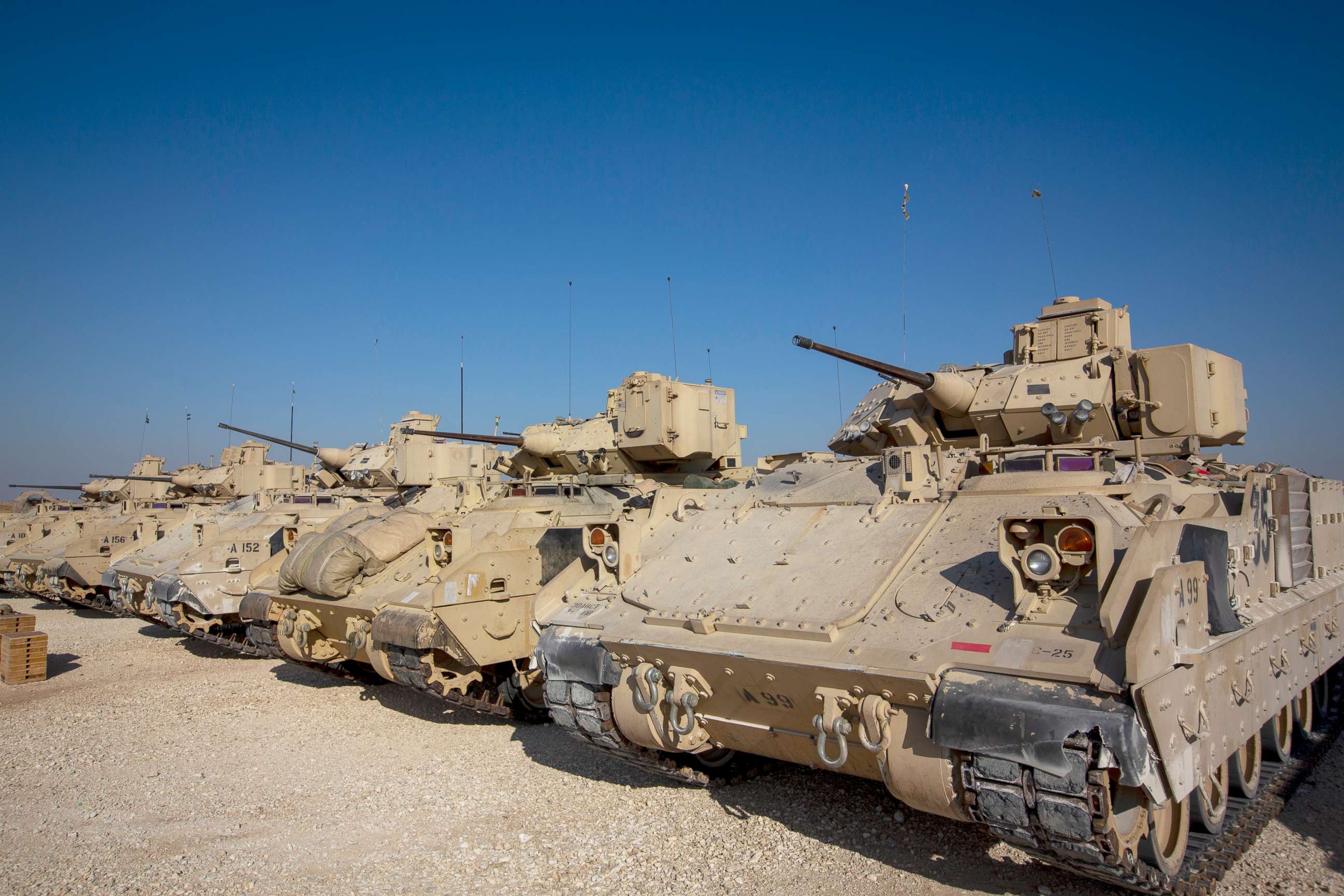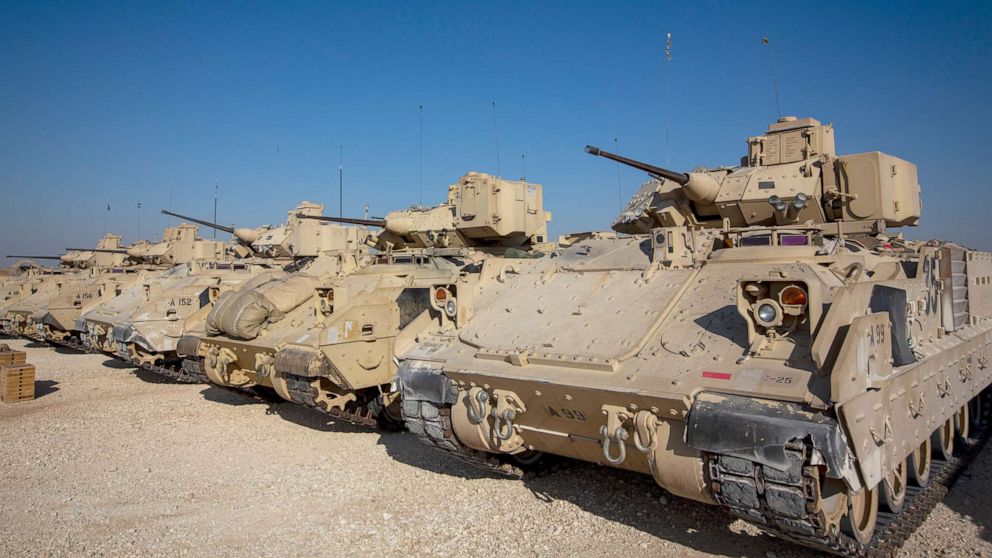US sends Bradley Fighting Vehicles to Syria to boost security for troops following Russian encounter
In a show of force, the U.S. military has sent armored fighting vehicles to eastern Syria to help protect the hundreds of American troops stationed there following a tense encounter with Russian forces last month that left seven American troops injured, said U.S. Central Command.
A military spokesman said the deployment of Bradley Fighting Vehicles, advanced radars and increased flight patrols was a "clear demonstration of U.S. resolve to defend Coalition forces" in eastern Syria.
"U.S. Central Command has directed a number of actions in northeast Syria to help ensure the safety and security of Coalition forces," Capt. Bill Urban, a spokesman for U.S. Central Command, said in a statement.
"The United States has deployed Sentinel radar, increased the frequency of U.S. fighter patrols over U.S. forces, and deployed Bradley Fighting Vehicles to augment U.S. forces in the Eastern Syria Security Area (ESSA)," he added.
"These actions are a clear demonstration of U.S. resolve to defend Coalition forces in the ESSA, and to ensure that they are able to continue their Defeat-ISIS mission without interference," said Urban.
"The United States does not seek conflict with any other nation in Syria, but will defend Coalition forces if necessary," said Urban.
A U.S. official said that six Bradley Fighting Vehicles arrived in Syria early Friday from Kuwait and that their deployment along with the forces manning the radar equipment will add an additional 100 personnel to the 500 American forces operating in eastern Syria. An additional 100 to 200 U.S. military personnel are stationed at a remote outpost along a major southern highway near the border with Jordan that is a transit point for Iranian weapons to Hezabollah and Syrian President Bashar Assad's regime.
The deployment of the Bradleys is a direct result of the Aug. 26 incident where a Russian armored vehicle rammed an American military patrol vehicle injuring seven service members.
"These actions and reinforcements are a clear signal to adhere to mutual de-confliction processes and for Russia and other parties to avoid unprofessional and unsafe and provocative action in eastern Syria," said the U.S. official.
That incident was deemed serious enough that Gen. Mark Milley, the chairman of the Joint Chiefs of Staff, phoned his Russian counterpart to express concerns about Russian actions that some officials described as "reckless."
The deployment is intended as a show of force to Russian troops that have been encroaching on the U.S. military's areas of operations east of the Euphrates River. Russian troops are supposed to operate west of that river, and American military officials have said that despite Russian claims their troops were not cleared to operate in the U.S. zone on the day of the incident.
There are about 500 American troops in eastern Syria operating in eastern Syria as part of a mission to protect Kurdish oil fields from ISIS.

Bradley Fighting Vehicles were first deployed to Syria last October as the first visible sign of the new American mission to protect the Kurdish oil fields. That mission followed President Donald Trump's initial decision to pull all 2,000 U.S. troops out of Syria following Turkey's invasion targeting Kurdish forces.
But the deployment was brief as they were removed three weeks after they had arrived and were replaced by additional forces.
The deployment came on the same day Trump said during a briefing that U.S. was "out of Syria," before adding the caveat of just protecting "the oil."
"We are out of Syria, other than we kept the oil. I kept the oil, and we have troops guarding the oil. Other than that, we are out of Syria," Trump said.
"We're out of Syria, except we kept the oil and we will make a determination, we’ll probably be dealing with the Kurds on the oil, and see what it all ends up, but we’ll be out," he added.
The U.S.-led anti-ISIS coalition said in a statement that the new deployment of Bradley Fighting Vehicles were all from the 2nd Brigade Combat Team, 1st Armored Division currently deployed to Kuwait.




